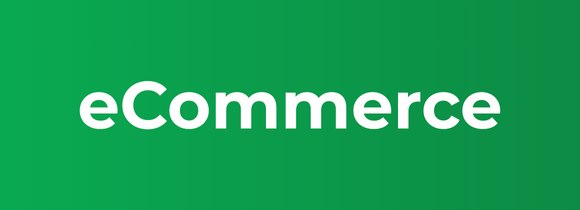

Ecommerce Marketing That Helps You Sell Smarter
Marketing for ecommerce isn’t just about getting clicks—it’s about turning shoppers into customers and customers into repeat buyers. For startups, that means having a plan that covers the whole funnel: traffic, conversion, retention, and growth.
This page walks you through the essentials so you can market your ecommerce business with focus, not guesswork.
Ecommerce Marketing That Helps You Sell Smarter
Marketing for ecommerce isn’t just about getting clicks—it’s about turning shoppers into customers and customers into repeat buyers. For startups, that means having a plan that covers the whole funnel: traffic, conversion, retention, and growth.
This page walks you through the essentials so you can market your ecommerce business with focus, not guesswork.
Tips to get you started with startup ecommerce marketing:
(Click linked headings for guidance)
- Understand Your Target Audience
Start by gaining a deep understanding of your target customers—their preferences, behaviors, pain points, and buying habits. This knowledge forms the foundation of your startup ecommerce marketing strategy.
- Market Research
Conduct thorough market research to identify trends, assess the competitive landscape, and uncover opportunities for growth within your niche.
- Competitive Analysis
Analyze your competitors to understand their strategies, pricing, product offerings, and customer engagement tactics. Use this information to differentiate your brand.
- Product Optimization
Ensure that your product listings are optimized for search engines and user experience. Optimize product titles, descriptions, images, and pricing.
- User-Friendly Website
Create a user-friendly and mobile-responsive website that offers a seamless shopping experience. Implement clear navigation, intuitive search functionality, and a secure checkout process.
- Content Creation
Develop high-quality and engaging product content, including product descriptions, images, videos, and user-generated content. Persuasive product copy can significantly impact conversion rates.
- SEO Strategy
Implement a robust SEO strategy to improve your website’s visibility in search engines. Focus on keyword research, on-page optimization, and link-building tactics.
- Email Marketing
Utilize email marketing to nurture customer relationships, promote products, and recover abandoned carts. Personalize emails and segment your audience for better results.
- Paid Advertising
Consider paid advertising channels like Google Ads, Facebook Ads, and Instagram Ads to drive targeted traffic to your website. Allocate budget based on performance.
- Social Media Marketing
Leverage social media platforms to engage with your audience, showcase products, and run advertising campaigns. Tailor content to each platform’s audience.
- Influencer Partnerships
Collaborate with influencers in your niche to expand your reach and tap into their dedicated followers. Ensure influencer partnerships align with your brand image.
- Customer Reviews and Ratings
Encourage customers to leave reviews and ratings on your products. Positive reviews build trust and can boost sales.
- Abandoned Cart Recovery
Implement automated abandoned cart recovery emails to remind customers of products left in their carts and incentivize them to complete their purchase.
- Loyalty Programs
Create customer loyalty programs that reward repeat shoppers. Offer discounts, exclusive access, or early product launches to loyal customers.
- Analytical Tools
Utilize analytics tools like Google Analytics and ecommerce-specific platforms to track key metrics, including conversion rates, average order value (AOV), and customer acquisition cost (CAC).
- Budget Allocation
Allocate your marketing budget strategically, focusing on tactics and channels that yield the best ROI.
- Legal Compliance
Ensure that your ecommerce practices comply with relevant regulations, including data privacy laws (e.g., GDPR) and advertising standards.
- Adaptability
Be prepared to adapt your ecommerce marketing strategy based on changing market conditions, customer behavior, and industry trends.
Tips to get you started with startup ecommerce marketing:
(Click linked headings for guidance)
Understand Your Target Audience
Start by gaining a deep understanding of your target customers—their preferences, behaviors, pain points, and buying habits. This knowledge forms the foundation of your startup ecommerce marketing strategy.
Market Research
Conduct thorough market research to identify trends, assess the competitive landscape, and uncover opportunities for growth within your niche.
Competitive Analysis
Analyze your competitors to understand their strategies, pricing, product offerings, and customer engagement tactics. Use this information to differentiate your brand.
Product Optimization
Ensure that your product listings are optimized for search engines and user experience. Optimize product titles, descriptions, images, and pricing.
User-Friendly Website
Create a user-friendly and mobile-responsive website that offers a seamless shopping experience. Implement clear navigation, intuitive search functionality, and a secure checkout process.
Content Creation
Develop high-quality and engaging product content, including product descriptions, images, videos, and user-generated content. Persuasive product copy can significantly impact conversion rates.
SEO Strategy
Implement a robust SEO strategy to improve your website’s visibility in search engines. Focus on keyword research, on-page optimization, and link-building tactics.
Email Marketing
Utilize email marketing to nurture customer relationships, promote products, and recover abandoned carts. Personalize emails and segment your audience for better results.
Paid Advertising
Consider paid advertising channels like Google Ads, Facebook Ads, and Instagram Ads to drive targeted traffic to your website. Allocate budget based on performance.
Social Media Marketing
Leverage social media platforms to engage with your audience, showcase products, and run advertising campaigns. Tailor content to each platform’s audience.
Influencer Partnerships
Collaborate with influencers in your niche to expand your reach and tap into their dedicated followers. Ensure influencer partnerships align with your brand image.
Customer Reviews and Ratings
Encourage customers to leave reviews and ratings on your products. Positive reviews build trust and can boost sales.
Abandoned Cart Recovery
Implement automated abandoned cart recovery emails to remind customers of products left in their carts and incentivize them to complete their purchase.
Loyalty Programs
Create customer loyalty programs that reward repeat shoppers. Offer discounts, exclusive access, or early product launches to loyal customers.
Analytical Tools
Utilize analytics tools like Google Analytics and ecommerce-specific platforms to track key metrics, including conversion rates, average order value (AOV), and customer acquisition cost (CAC).
Budget Allocation
Allocate your marketing budget strategically, focusing on tactics and channels that yield the best ROI.
Legal Compliance
Ensure that your ecommerce practices comply with relevant regulations, including data privacy laws (e.g., GDPR) and advertising standards.
Adaptability
Be prepared to adapt your ecommerce marketing strategy based on changing market conditions, customer behavior, and industry trends.
Running ecommerce marketing solo means leaning on data, staying flexible, and learning as you go. With the right approach, you can attract the right customers, drive sales, and build a store that actually grows.
Running ecommerce marketing solo means leaning on data, staying flexible, and learning as you go. With the right approach, you can attract the right customers, drive sales, and build a store that actually grows.


Basic Resources
What to Read (and Use) to Build Your Ecommerce Strategy
Basic Resources
What to Read (and Use) to Build Your Ecommerce Strategy
Advanced Resources
Further develop your startup ecommerce marketing strategy
Advanced Resources
Further develop your startup ecommerce marketing strategy


Tools to develop and manage your startup ecommerce marketing function
Tools to develop and manage your startup ecommerce marketing function
Don’t let marketing slow you down—or drive you nuts. If you’re stuck, swamped, or just tired of Googling everything, Mathlete Marketing has your back.
Don’t let marketing slow you down—or drive you nuts. If you’re stuck, swamped, or just tired of Googling everything, Mathlete Marketing has your back.
